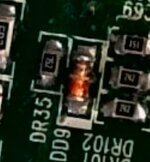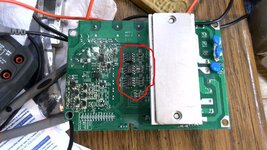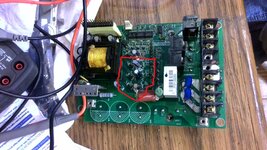sherrilb
Newbie
My electronics education and experience go back to 1963-70. Vacuum tubes, high voltage power supplies,...
Please tell me what this component is. Other than knowing it is a diode (or reads like a diode when isolated from the other circuitry, I know nothing about it and need to replace another like it.
This is a part of bridge rectifier, I think. The module is an inverter, 220 vac single phase to 220 vac three phase.
Thanks in advance.
Sherril
Please tell me what this component is. Other than knowing it is a diode (or reads like a diode when isolated from the other circuitry, I know nothing about it and need to replace another like it.
This is a part of bridge rectifier, I think. The module is an inverter, 220 vac single phase to 220 vac three phase.
Thanks in advance.
Sherril


